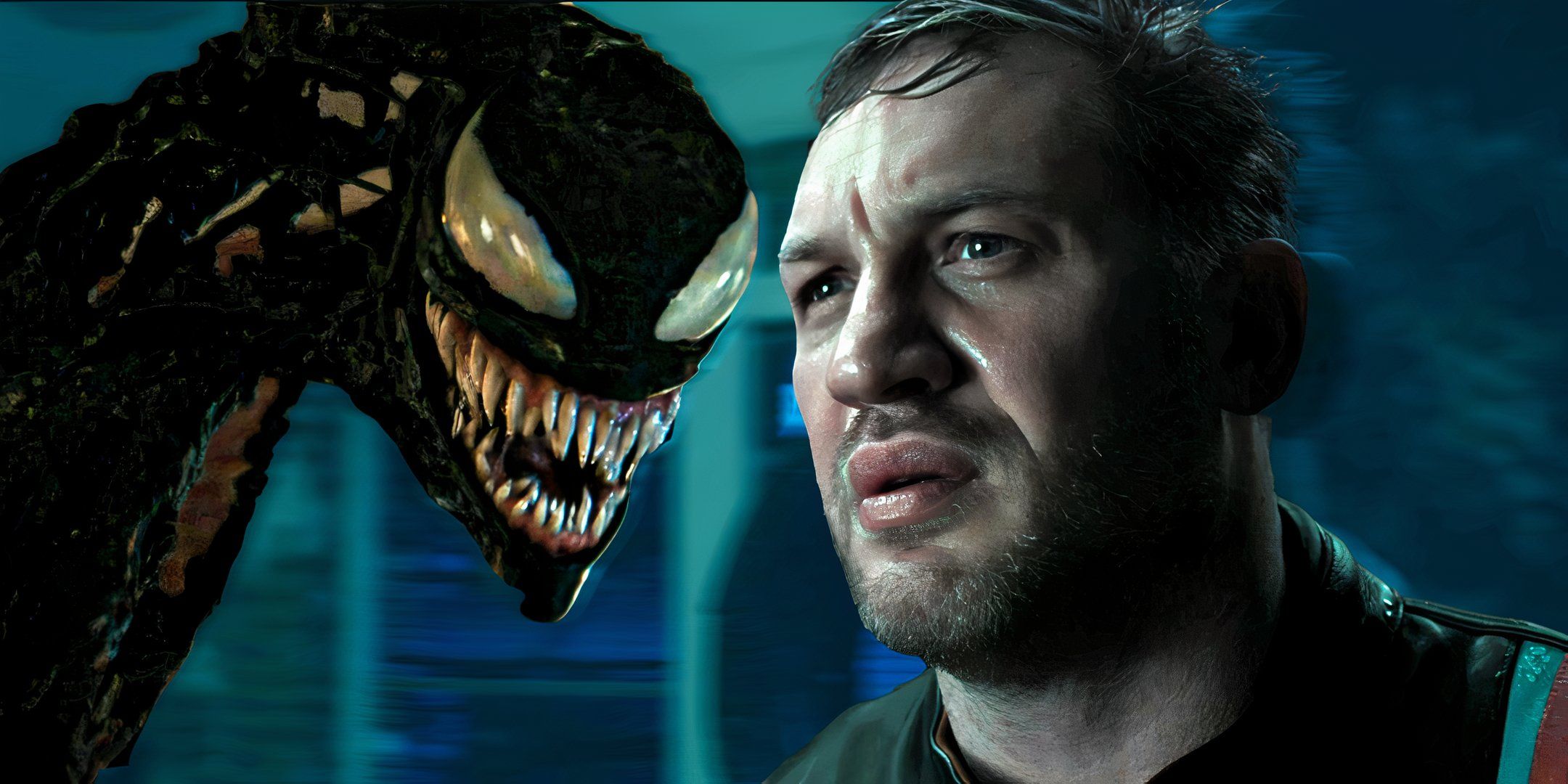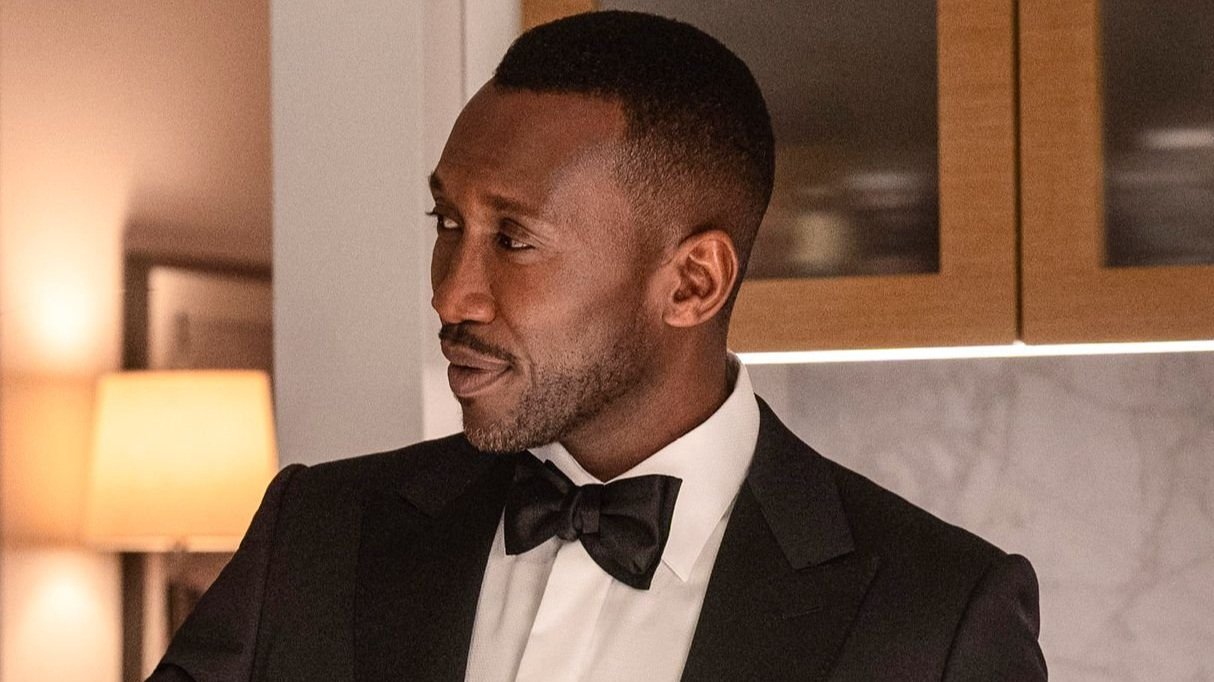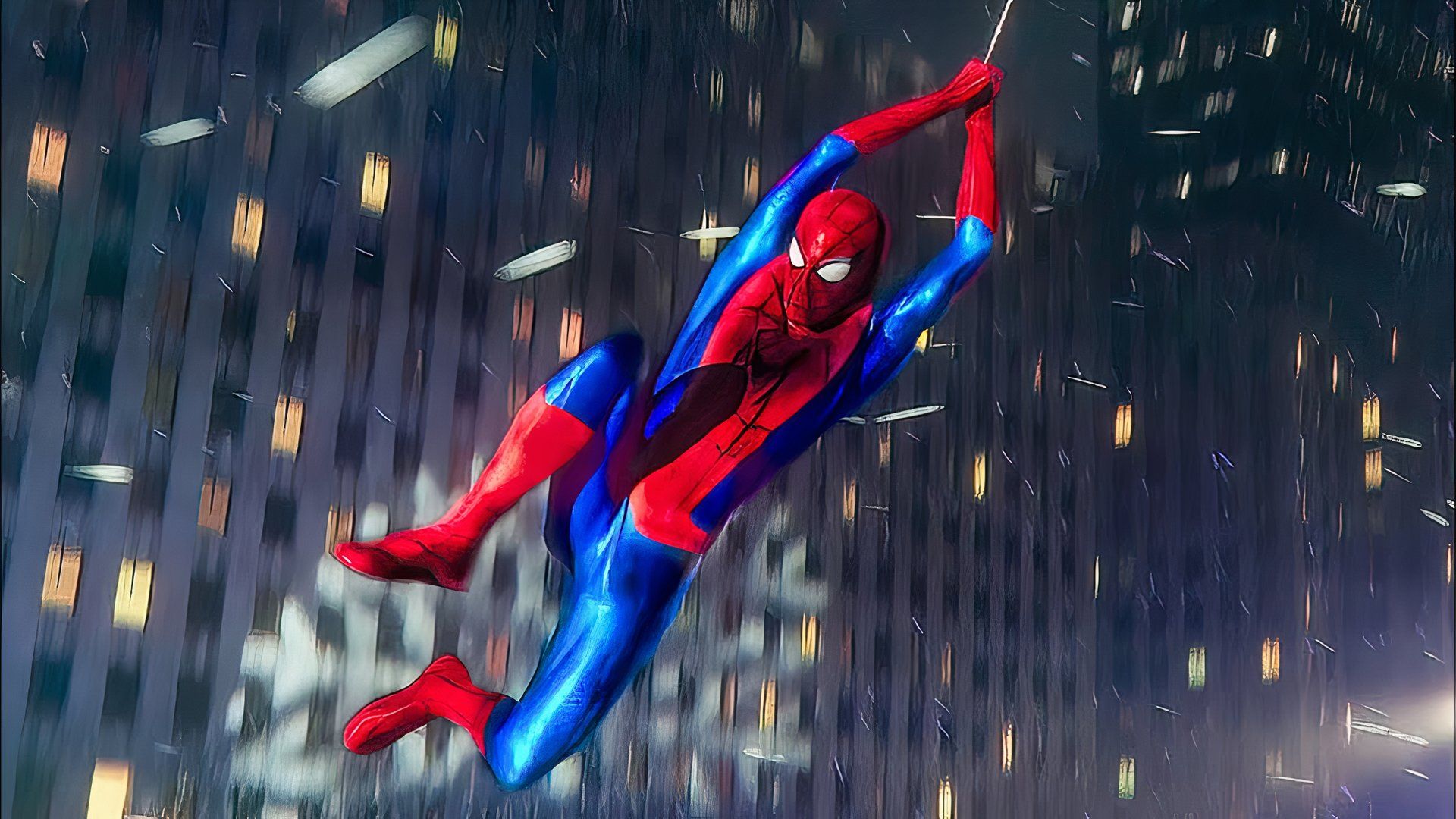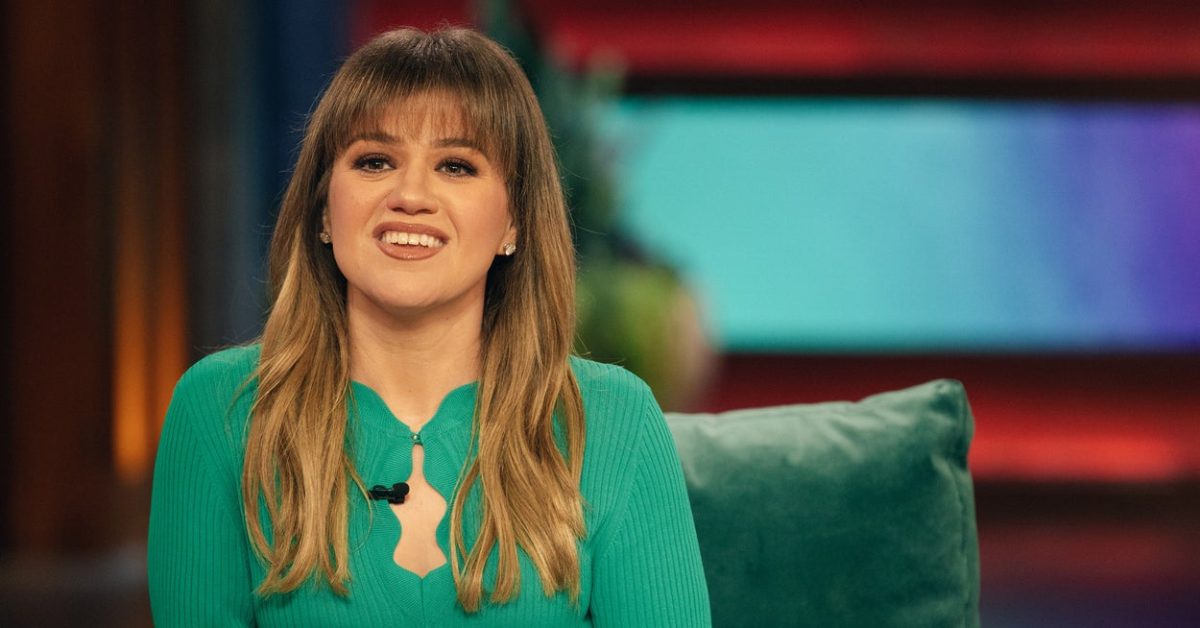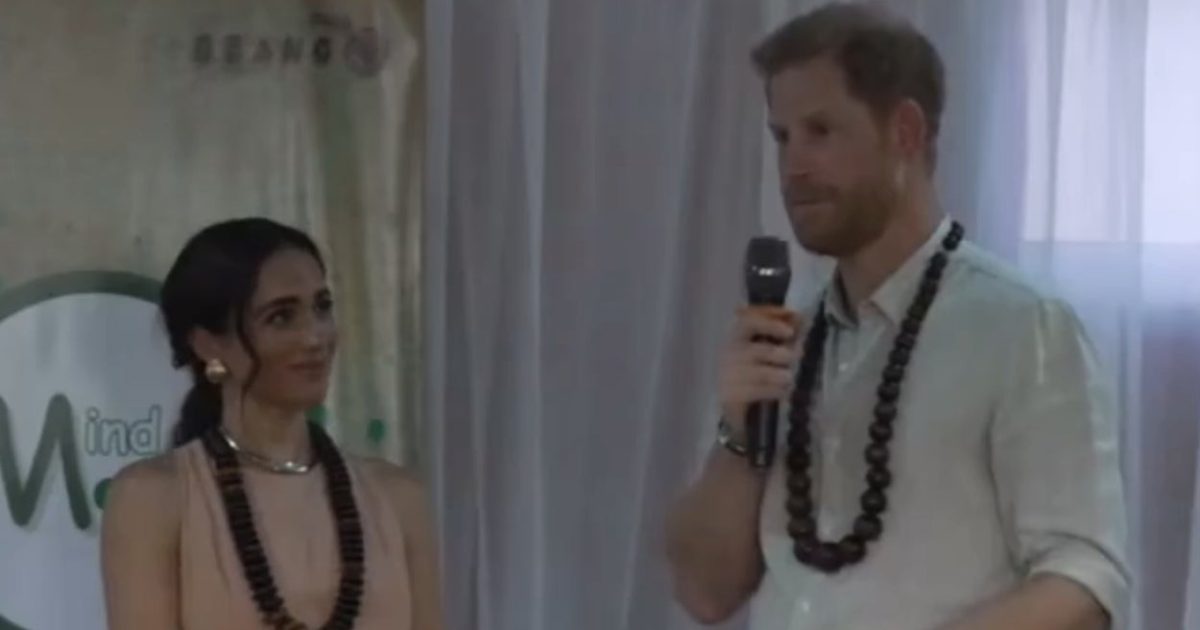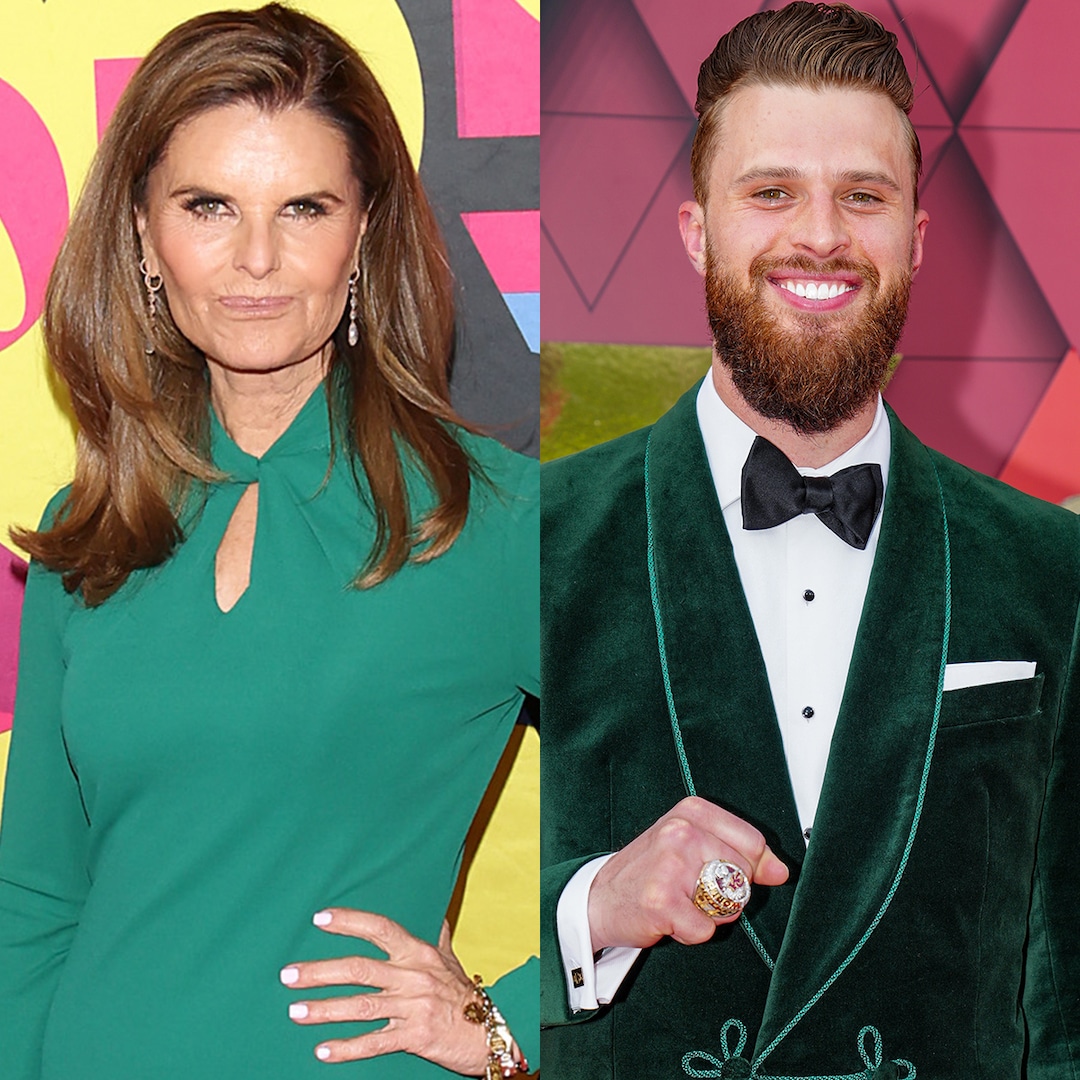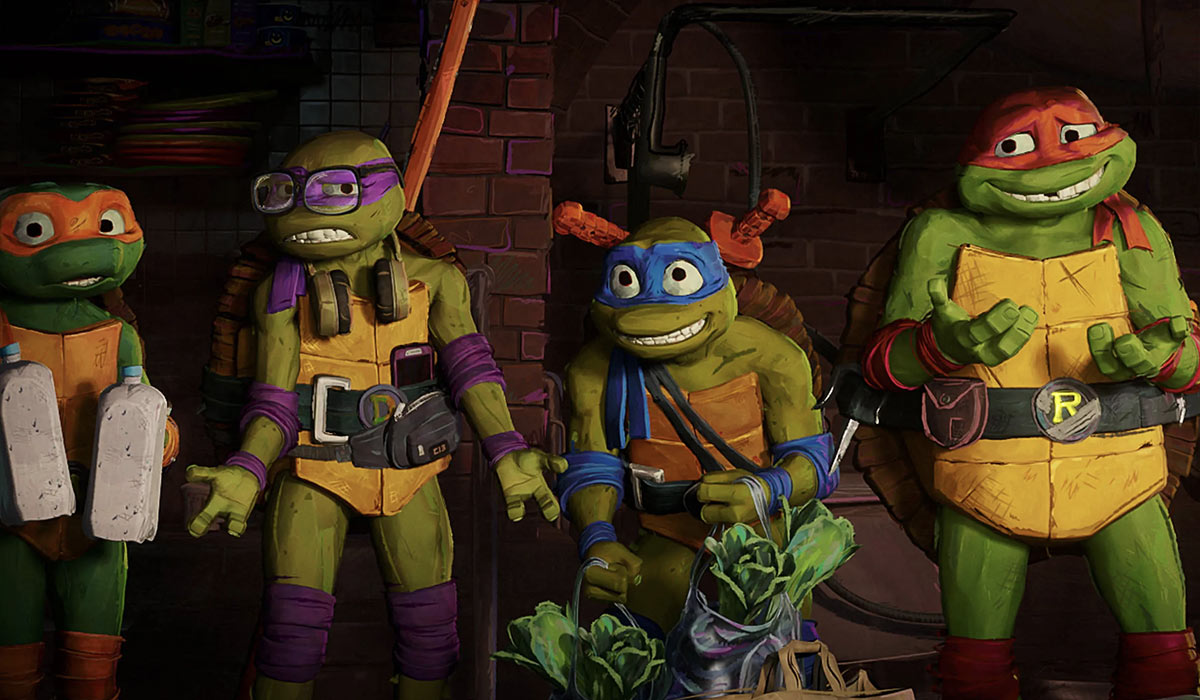
Jeff Rowe Revisits ‘The Living Comic’ And Wong Kar-wai Aesthetic Of TMNT: Mutant Mayhem
Nov 29, 2023
Imagine the pressure of tackling yet another new incarnation of a property that has been rebooted and reimagined at least three times over the past 20 years. When it comes to the Teenage Mutant Ninja Turtles, that was a challenge director Jeff Rowe was more than down for. In fact, his creative vision, “Teenage Mutant Ninja Turtles: Mutant Mayhem,” is the most critically acclaimed film or TV series in the franchise’s almost 40-year history. And now, Rowe and his “Mutant Mayhem” team are looking at landing their first Oscar nomination for Animated Feature Film.
READ MORE: ‘Teenage Mutant Ninja Turtles: Mutant Mayhem’ Review: This reboot is delightfully dorky
We caught up with Rowe earlier this month to discuss his unique pitch for the “first thing I ever loved in my life,” how he cast Ayo Edebiri and Jackie Chan in two pivotal roles, the movie’s impressive box office showing against Barbenheimer (well, at least to some of us), the unexpected influence of Wong Kar-wai and “Chungking Express” on the film’s “living comic” visual aesthetic and much, much more.
_____
The Playlist: How have you felt about the box office success of this movie? It came in and you were like on the heels of “Barbie” and “Oppenheimer,” and then you didn’t have your actors available. What did the success and the long playability of the movie mean to you?
Jeff Rowe: I mean I think it’s a little bit of a bummer, but it’s understandable given the marketplace. I think my primary goal as a filmmaker is to tell a good story and do it in an artistically daring way. And I think the film accomplished that goal and critically, it proved out to be successful. So, it’s like, I would take the critical success over the financial success personally. But it’s always nice when you have both in an ideal world, but I don’t begrudge “Barbie” or “Oppenheimer.” I think it was a really exciting summer for movies. And it just brought me so much joy to see so many people going back to theaters and watching films again. And it makes me confident for the future. And even though we, I think, dropped at a window that didn’t maximally benefit us in the box office, I’m just overall really happy and excited about the state of film in 2023. I think it’s a good time to be making movies, and I think it’ll be good for us in the future, hopefully.
We must be on different wavelengths because from what I saw, it made $180 million global.
Yes.
And it only costs $70 million, right?
I don’t know if I’m allowed to talk about the budget [Laughs.]
O.K. But it seems like it’s a hit, so I thought it did really well. So, I was hoping you would be happy at least with that [Laughs.] Well, you came in a very weird window where you were right after these two movies that both basically made a billion dollars, or more, each. So, I was going to congratulate you on the box office because, from a third-party perspective, you’ve made a movie with a property that what? How many movies have there already been? It’s not a brand new. So, I thought you actually showed that there was still life in the franchise. So, that was my congratulations to you. [Laughs.]
Oh, thank you. Yeah.
So, let’s talk about the beginning of this project. How did it even come your way?
I was finishing up “Mitchells vs. the Machines” and was looking for my next thing to do with my agent, and he was like, “Do you like Seth Rogen movies?” And I was like, “I love Seth Rogen movies.” “Do you love the ‘Ninja Turtles’”? I was like, “It was the first thing I ever loved in my life.” And he’s like, “Well, they’re doing a ‘Ninja Turtles’ movie. It’s like a coming of age, them in high school kind of thing. You probably won’t get the job, but I can set up a meeting.” And I was like, “Yes, yes. I will do anything. Please set the meetings.” And then it was just a series of boss battles of meeting progressively more important and scary people, and then eventually somehow I convinced them that I was the right person to do this. I just brought a lot of enthusiasm for the property and also just what it could be artistically. And then also just, I think Seth and Evan and I were very much on the same page about wanting it to feel grounded and realistic and making them feel like real authentic teenagers. So, yeah, we just had a really good meeting where it felt like we were on the same page. And then, I got the call that I got to make the movie, and we started in COVID, which was strange for the first year.
Was there anything that you pitched specifically that you think helped you get the gig?
I think I just kept saying they need to feel naturalistic. They can’t be like giant hulking, muscular turtles. I think sometimes you’ll see it in a lot of fan art and you’ll see it in a lot of the comics. It’s been with us for a while, but it’s this post-Christopher Nolan Batman thing where it’s like everything becomes black and tactical and deadly serious. And I was like, “I don’t think that serves this property.” It’s inherently a funny, comedic franchise, and they’re teenagers. I think part of the reason Spider-Man is one of the most enduring characters of all time is because he’s a teenager. He’s relatable. Kids can see themselves being Spider-Man more than they can see themselves being Superman or Batman, also, huge. And it’s like Ninja Turtles should be that level of relatability and friendly and warm to audiences, and I think that was a big part of it.
Who came up with the inspiration for the look of the movie for its distinct visuals?
That was something I found with our production designer, Yashar Kassai. And we wanted to pick a visual North Star for the film in the way that the first “Spider-Verse” movie was like, “We’re going to make it look like a living comic.” I was like, “We don’t want to make it look like a comic. The turtles have been a comic. They’ve been a 2D animated series. They’ve been a live-action film. There’s nothing necessarily in the canon that feels like what we need to make this film look like.” And because we’re leaning so much into the teen part of it in the vocal performances and the animation performances, in the writing of it, we started looking at teenage drawings, like the kinds that you do in a notebook when you’re 16 and how beautiful and flawed, and they’re really impassioned and they’re really imperfect. And it’s kind of this great metaphor about being a teenager where it’s like you think you are the smartest person in the world. You’ve got it all figured out. No one has ever been as immortal or cool as you will be in that moment. And that is just completely unchecked by reality. And it comes through in those drawings that just have no formal art training. So, it was really a process of building mistakes into the art style. The things that get trained out of your brain when you go to art school, clean that up. Don’t leave that graphite smudge there. Simplify the eye. Don’t draw every eyelash. Part of my job was making it comfortable for a team of really skilled and capable artists to feel okay drawing like they were in high school again. The imperfections were a feature, not a bug, and we just had to embrace that.
Besides those guidelines that you just mentioned in terms of what the drawings were, were there any other specific rules?
There’s a lot of things that we did. I think also kind of as a reaction to the last 30 years of CG animation. And things that have become trends, like you mentioned color. A computer has billions of colors, things that you can’t even mix with paint or don’t even exist outside an Apple Retina display. And I think with computer animation, you can pump all of these colors into an image. You can bounce purple light into the shadows, and films have become very saturated and polychromatic, and our film has a saturated look. But we wanted to be really selective with colors and how we divide the space and use those as design elements. We were inspired by “Chungking Express” and a lot of Wong Kar-wai films and street photographer, Alex Webb. And the images were saturated but selective. We would pick two to three colors for a scene and then always try to get the color and lighting to obey realistic photographic rules of lighting as a contrast to the design style, which was very pushed, expressive, and uninhibited. And I think also fastness became a rule, not out of a production need, but just part of what happens when you’re drawing as a teenager is you get lazy and you just start drawing more windows more quickly because you’re like, “I have to draw a hundred windows on this building.” The first one is perfect. The 100th one is just a circle scribble. So, it’s encouraging people to work faster and don’t overintellectualize it. And that was a method to build flaws into what we were doing. And then just being smart about first takes. I’m a big believer in sometimes you get something really real and really expressive with just the first approach to it, because it’s like you do something and then you’re like, “Well, I have to do that better.” But we always tried to embrace the “What was your first instinct? What was the thing that just came out of you that was subconscious?” And I don’t have the vocabulary for it. Your subconscious mind is doing the heavy lifting more so than your 10 years of art school overthinking it.
Is it hard to find artists who can break down habits of feeling they have to go back and make it look perfect?
I think so. I think most artists can do it. I think they just haven’t really been given the chance. And I think our team really had a lot of fun. For a lot of artists, it was really freeing to not have to be super formal and super tight, because I think it’s really stressful sometimes to be perfect. And I don’t want to make it seem like we didn’t have high standards.
Oh, sure.
I have remarkably high standards for precision and things, but it’s also, it’s the precision of capturing flaws and imperfections, not controlling things. But yeah, we found a really good team of artists and then it was really just like, “This is O.K. Be wilder. Be crazier. Do the things that when you’re doing this, you hear the voice of your old production designer saying, ‘Hey, you can’t do that.’ That’s an indication that you need to be doing it. Go follow whatever you’ve been told not to do, that’s what we need you to do right now.” And I think that became a fun exercise for them.
I’m assuming you cast Ayo Edebiri as April before “The Bear” ever dropped last summer?
It was post-“The Bear.”
Oh, so you knew. You knew she was big.
Yeah, yeah. We knew what we were doing.
I thought you had found her beforehand and were like…
No, no. I wish. I should say that in interviews. We had seen “The Bear” and we’re like, “This is April.” And she did an audition and it was incredible. On my previous film, “Mitchells,” it had Olivia Colman. And every time we saw Olivia Colman act, it would be like watching an Olympic athlete or something. She was so good. And then, Ayo’s first audition, I was like, “This is another Olivia Coleman.” She’s so good at acting. And she brought a lot to the character, too. She’s a really skilled writer and comedian, so it’s like she would always improv, knew how to steer the scene, knew how to improv in a way that still moved the story forward, and was really, really great. Not a lot of people could be thrown in with four teenage boys yelling over each other, and she killed it.
How did you get Jackie Chan to play Splinter?
I still don’t know. I don’t know why he said yes. I wrote him a letter. We really wanted him. Before we cast him, we were already designing our fight choreography to be an homage, homage, homage to his films. And then when we’re like, “We need someone for Splinter. Wow. Wouldn’t Jackie Chan be great? He’ll never say yes, but let’s try.” And then he did it, and it was like he is as iconic to me as Elvis. He’s such a big part of so many films that I love. So, to get to work with him, it was just a dream come true.
What was the toughest nut to crack making this movie? When you look back at this experience, was it the casting, was it the story, was it the third act?
I mean, the story was not working for a while, for a year and a half, or maybe even longer. Half the film’s life or two-thirds of the film’s life, the movie took place entirely in high school. The turtles got to high school on page 30 of the script, and it was more about the drama of them fitting in. And there was also a crime plot. It was more like “21 Jump Street” or something, but it wasn’t clicking. And part of the issue was the turtles got everything that they wanted on page 30 of the script, and we’re just like, “Wouldn’t it make more sense if they can’t go to high school and we just push that to the end”? And it was really scary to consider completely changing a film halfway through. But we rewrote a script in 48 hours. The studio was were really good partners through us. But the studio was like, “This is terrifying because we want to make our release date, but we agree that this is better, and if we can pull this off, we can pull this off. We can still make the release date.” And we’re like, “We can still make the release date.” And then they let us make that version of the film and prove it out. But it was a big change late in the game.
Well, it worked.
It worked.
My last topic for you is it has been reported that you’re making the sequel to this movie.
Yes, yeah.
Are you excited about it? I guess, it’s never easier, but you already have a clear path of where you want to go with the sequel?
Yeah, yeah, yeah. We’re figuring a lot out right now, but there are tonal things. I think as a director, I work in maybe a bit of a strange way where I’m just like, “What are images? What sounds that I want to hear? What are pieces of music and things that give this an energy and a visual and tonal identity”? And it’s like a lot of that is clear in my mind, and the story is coming together. I’m a big fan of the David Lynch [technique] “Just dream. Just have a dream, and hold an image, and then think about the images around it.” And I’m like, “That is as valid of an approach to making films as anything else.” So that’s where the sequel’s at. And I don’t want to sound arrogant or something, but I’m really proud of a lot of the things that the first movie accomplished artistically for an animated film. I think it pushes a lot of boundaries. I think it does a lot of things differently than how we’ve been told an animated film needs to look or what it needs to do in its editing, in its camera work, in its vocal performances, in its animation style. And I’m excited to keep pushing the envelope.
“TMNT: Mutant Mayhem” is now available on digital download services and Paramount+
Publisher: Source link
Kelly Clarkson Discussed Weight Loss And Ozempic Rumors
Kelly Clarkson Discussed Weight Loss And Ozempic Rumors A few weeks later, Kelly discussed her physical transformation for a second time, celebrating the fact that she no longer felt the need to wear shapewear. Amid all the speculation, Kelly attributed…
May 18, 2024
Early Memorial Day Sales You Can Shop Now: J.Crew, Spanx & More
Kate Spade: Save 40% on Kate Spade markdowns. Kate Spade Outlet: Nab 70% off hundreds of Kate Spade styles. Plus, an EXTRA 20% off shoes and crossbodies. Lilly Pulitzer: Shop 25% off deals on Lilly Pulitzer spring styles. lululemon: Technically, there isn't a lululemon sale…
May 18, 2024
Meghan Markle Swooned Over Prince Harry And People Are Obsessed
Notably, Harry’s brother, Prince William, and father, King Charles III, failed to show up to support Harry at Wednesday’s event at St. Paul’s Cathedral. However, people were touched when they noticed he was surrounded by relatives from his late mom,…
May 17, 2024
Maria Shriver Calls Out Harrison Butker for Graduation Speech
Maria Shriver is throwing a flag on Harrison Butker's recent comments. The journalist weighed in on the Kansas City Chiefs kicker's eyebrow-raising commencement address at Benedictine College earlier this week, where he expressed his belief that women role should be in the home…
May 17, 2024
